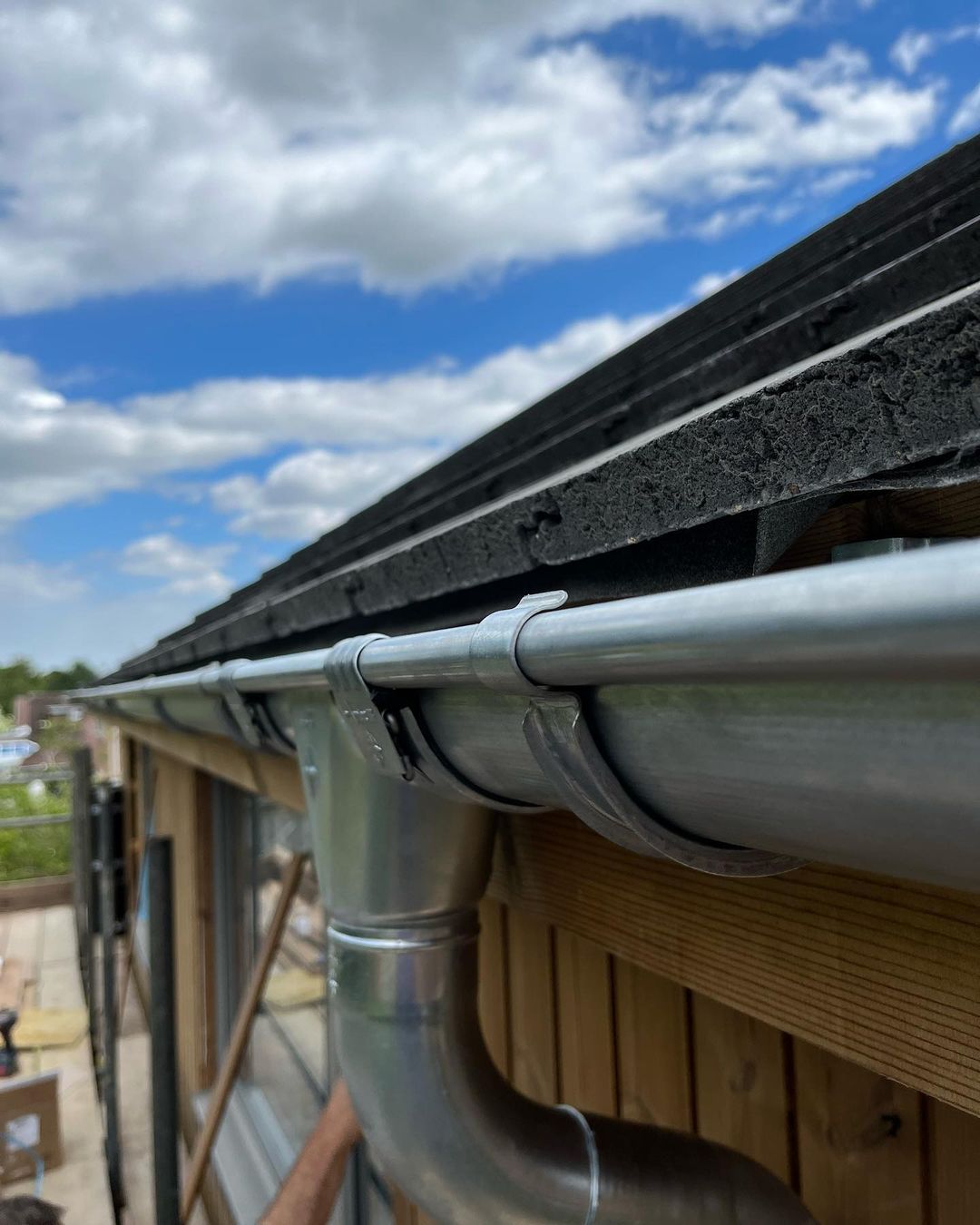As a leading supplier of metal guttering, we believe it's very important to know how to cut it.
Properly cutting and installing metal rainwater is essential to ensure their effectiveness and longevity.
In this guide, we'll walk you through the best practices for cutting galvanised steel, aluminium, and cast iron guttering, ensuring you achieve professional results safely and efficiently.
Section 1: Cutting Galvanised Steel
Recommended Tool:
Using a hacksaw is the safest method for cutting galvanised steel. NOT spinning blades, which can generate heat and release toxic fumes. A hacksaw, on the other hand, offers a manual, controlled cut.
Preparing the Work Area:
- Choose a well-ventilated area to work in.
- Ensure your workspace is stable and secure to prevent accidents.
- Gather all necessary safety equipment, including gloves, goggles, and a dust mask.
Handling the Hacksaw:
- Select a hacksaw with a fine-toothed blade suitable for metal cutting.
- Secure the galvanized steel gutter in a vice or with clamps to keep it steady.
- Use long, steady strokes with the hacksaw, applying consistent pressure to avoid bending the metal.
Achieving a Clean Cut:
- Mark the cutting line clearly with a marker or chalk.
- Begin cutting slowly to establish a groove, then increase speed gradually.
- Smooth any rough edges with a metal file to prevent injuries and ensure a neat finish.
Key Takeaway: Using a hacksaw to cut galvanised steel gutters is safe and effective, minimising the risk of toxic fume exposure and ensuring a precise cut.
Section 2: Cutting Aluminium
Aluminium guttering is lightweight and resistant to corrosion, making it a popular choice for many homes. Cutting aluminium requires precision to avoid damaging the material and to maintain a clean edge.
Recommended Tools: Fine-toothed circular/chop saw, iron file To achieve a smooth, precise cut in aluminium, a fine-toothed circular or chop saw is ideal. Follow up by deburring rough edges with an iron file to ensure a professional finish.
Choosing the Right Saw:
- Opt for a circular saw with as many teeth as possible; this ensures a finer cut.
- Consider investing in a high-quality saw, such as a Hilti Circular or Chop Saw, for frequent use.
- For occasional projects, a De-Walt circular/chop saw can be a cost-effective option.
Using the Saw:
- Secure the aluminium gutter firmly in place to prevent movement.
- Mark the cutting line clearly and double-check measurements.
- Begin the cut slowly to avoid jamming the blade, then proceed with steady, controlled movements.
- Use a "cold cut" Carbine TIP metal cutting blade to minimize heat and avoid damaging the gutter's finish.
Deburring and Finishing:
- Use an iron file to smooth any rough edges left after cutting.
- Clean the cut area thoroughly to remove metal shavings.
- Apply touch-up paint to any exposed edges to protect against corrosion.
Key Takeaway: A fine-toothed circular saw combined with proper finishing techniques ensures clean, professional cuts in aluminium guttering, protecting the material from corrosion.
Section 3: Cutting Cast Iron
Cast iron guttering, known for its robustness and classic appearance, requires special tools and techniques due to its density and hardness.
Recommended Tools: Steel drill bit, diamond cutting blade for angle grinder Cutting and drilling cast iron demands durable, high-quality tools capable of handling its tough composition.
Preparing the Work Area:
- Ensure your workspace is stable and well-ventilated.
- Wear appropriate safety gear, including heavy-duty gloves, goggles, and a dust mask.
- Secure the cast iron gutter securely to prevent movement during cutting.
Drilling and Cutting Techniques:
- For drilling, use a steel drill bit designed for metal. Mark the drilling points clearly.
- Start drilling slowly to prevent the bit from slipping, then increase speed as needed.
- For cutting, use a diamond cutting blade attached to an angle grinder.
- Mark the cutting line and begin with slow, steady movements to avoid chipping or breaking the cast iron.
- Apply consistent pressure and let the blade do the work to achieve a clean cut.
Finishing Touches:
- After cutting, use a metal file to smooth any rough edges.
- Clean the gutter thoroughly to remove any dust or debris.
- If necessary, apply a protective coating to the cut edges to prevent rust.
Key Takeaway: Using a steel drill bit and a diamond cutting blade with an angle grinder ensures precise, safe cuts in cast iron guttering, maintaining the material's durability and appearance.
Conclusion
Properly cutting metal guttering is crucial for ensuring a secure and effective installation.
Each type of metal—galvanised steel, aluminium and cast iron—requires specific tools and techniques to achieve the best results. By following the recommended methods and taking appropriate safety precautions, you can achieve professional-grade cuts that enhance the longevity and performance of your guttering system.
Additional Resources
Tool Recommendations:
- Hilti Circular/Chop Saws
- De-Walt Circular/Chop Saws
- Cold Cut Carbine TIP Metal Cutting Blades
- Steel Drill Bits
- Diamond Cutting Blades for Angle Grinders
Further Reading:
- The Ultimate Guide To Metal Guttering
- Do You Need Sealant For Cast Iron Guttering?
- Cast Iron Guttering Guide
- Top 5 Benefits of Aluminium Guttering
By investing in the right tools and following these detailed steps, you can ensure your metal guttering project is a success, providing lasting protection for your home.

